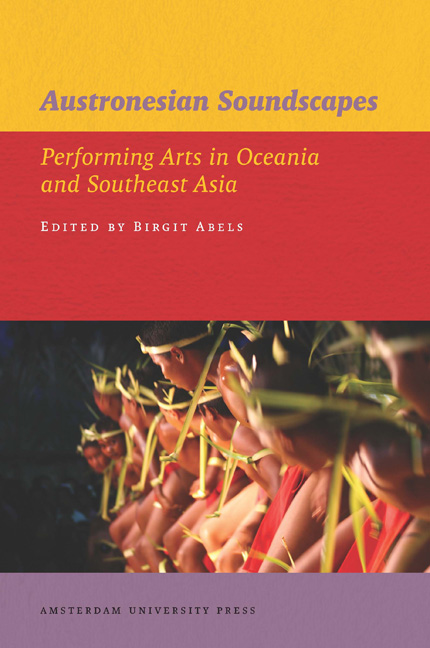14 - ‘To Sing is to be Happy’: The Dynamics of Contemporary Maori Musical Practices
Published online by Cambridge University Press: 20 January 2021
Summary
Introduction
Maori music is well known throughout the world. Indeed, who is not familiar with the haka, a dance of defiance accompanied by a rhythmically recited chant, which has become the trademark of the New Zealand national rugby team, also known as the All Blacks? The haka has become an icon of Maori culture since receiving ample attention in the media, even being used in Scottish whiskey advertisements, but it is important to establish that it is far from characteristic of Maori music. The indigenous population of New Zealand has a much more extensive repertoire of chants and songs, not all of which are performed in combination with a dance. Indeed, it would be erroneous to assume that Maori sing only before a rugby match or in encounters with tourists. On the contrary, music, especially singing, constitutes an integral dimension of Maori cultural practices in past and present.
Maori passion for singing and other types of music was first noted by the very first European visitor to New Zealand. Captain Cook remarked that Maori are fond of singing in a variety of different contexts, including ceremonies, battles and other more leisurely types of situations. He observed that they spent much of their time singing and playing a range of musical instruments (Cook 1955 [1769]: 154-294). The ethnomusicologist avant la lettre, Johannes Andersen (1934), provides an overview of similar findings by other explorers and travellers in the eighteenth and nineteenth century. The early ethnographer Elsdon Best (1925: 105) made a preliminary attempt to explain what he describes as Maori ‘fondness for song‘, which he linked to the absence of a script. He argued that Maori culture relied entirely on spoken language and oral traditions, as a consequence of which they also valued song composition to commit to memory important information and associated feelings they wanted to remember and continue expressing. In the 20th century, ethnomusicology has further developed this insight by focussing on the study of music in culture (Merriam 1964). In this chapter, music is also considered as an intrinsic dimension of Maori cultural practices, whereby the focus will be on contemporary music with an emphasis on singing (see Flintoff [2004] on the revival of traditional instruments, which is the prerogative of a few initiates).
- Type
- Chapter
- Information
- Austronesian SoundscapesPerforming Arts in Oceania and Southeast Asia, pp. 277 - 294Publisher: Amsterdam University PressPrint publication year: 2012

